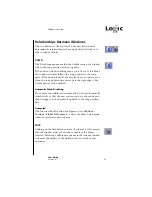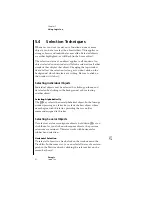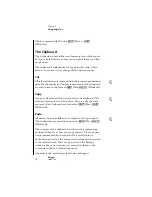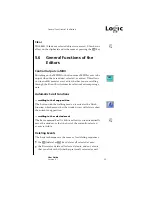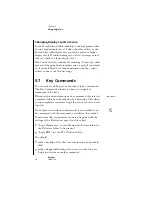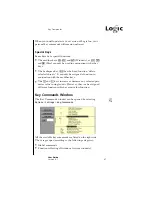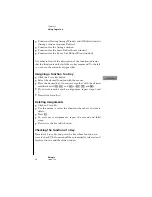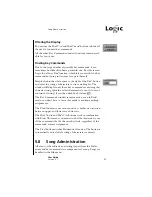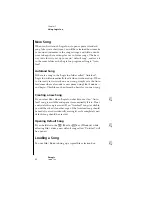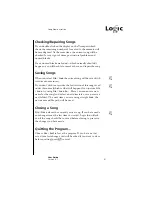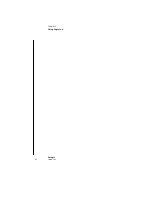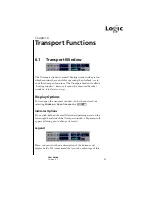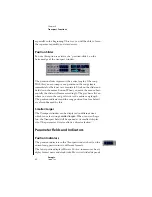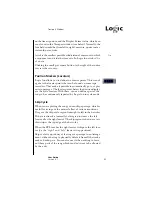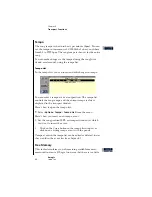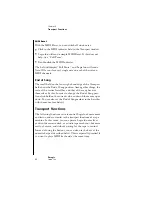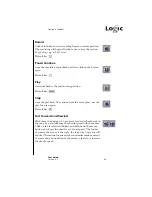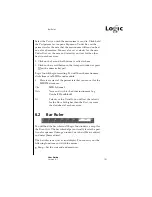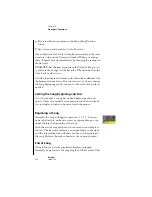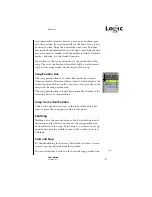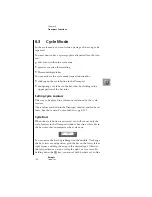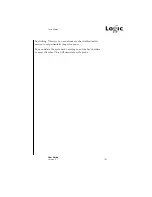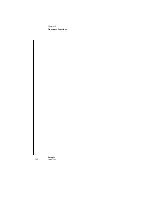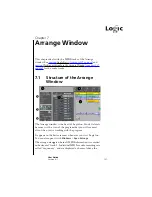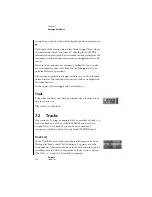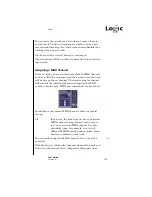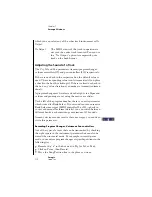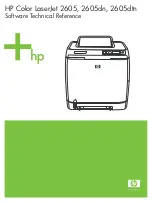
Transport Window
95
User Guide
Version 4.1
r
on the time signature, and the Display Format value, which you
can also set in the Transport window (see below). Normally, the
four fields would be (from left to right): measure, quarter notes,
sixteenth notes, ticks.
A tick is the smallest possible subdivision of a measure in which
a sequencer can divide the time axis. In Logic fun a tick is
1
⁄
3840
of a note.
Clicking the small gray square button to the right of the indica-
tors sets these to zero.
Position Markers (Locators)
Logic fun allows you to define two locator points. This is anal-
ogous to the locator points that can be found on some tape
recorders. They make it possible to automatically go to, or play
certain passages. The locator points, below the position display,
are the cycle locators. With these, you can define a part of the
song to be continuously repeated by Logic fun in cycle mode.
Skip Cycle
When you are playing the song you can skip a passage, which is
useful for trying out the musical effect of various transitions.
Drag out the skip cycle region from right to left in the bar ruler.
If there is already a (normal) cycle region just move the left
locator after the right locator. The skip region is shown as a very
thin strip at the top edge of the bar ruler.
When the SPL reaches the right locator it skips to the left loca-
tor (i.e. the “right” and “left” locators swap positions).
Skip cycle is a quick way of leaving out a passage in an Arrange-
ment, without having to physically delete it from all the tracks,
make a backup, etc. You can also use it when editing, to leave
out those parts of the song which you don’t want to be affected
by the edit.
Tip
Summary of Contents for Logic fun
Page 1: ...E Sof t und Hard wa re Gmb H l User Guide for Logic fun Version 4 1 March 2000 English ...
Page 2: ......
Page 6: ......
Page 8: ...Emagic Logic fun 8 ...
Page 26: ...22 Chapter 1 Features Emagic Logic fun ...
Page 38: ...34 Chapter 2 Sound Cards and MIDI Emagic Logic fun ...
Page 48: ...44 Chapter 3 Getting Started Emagic Logic fun ...
Page 72: ...68 Chapter 4 MIDI Tutorial Emagic Logic fun ...
Page 96: ...92 Chapter 5 Using Logic fun Emagic Logic fun ...
Page 110: ...106 Chapter 6 Transport Functions Emagic Logic fun ...
Page 140: ...136 Chapter 8 Audio Basics Emagic Logic fun ...
Page 162: ...158 Chapter 10 Mixer and Effects Emagic Logic fun ...
Page 174: ...170 Chapter 11 The Event List Emagic Logic fun ...
Page 206: ...202 Chapter 13 The Score Editor Emagic Logic fun ...
Page 224: ...220 Chapter 15 Video and MIDI Files Emagic Logic fun ...
Page 240: ...236 Glossary Emagic Logic fun ...
Page 256: ...252 Index Emagic Logic fun ...

